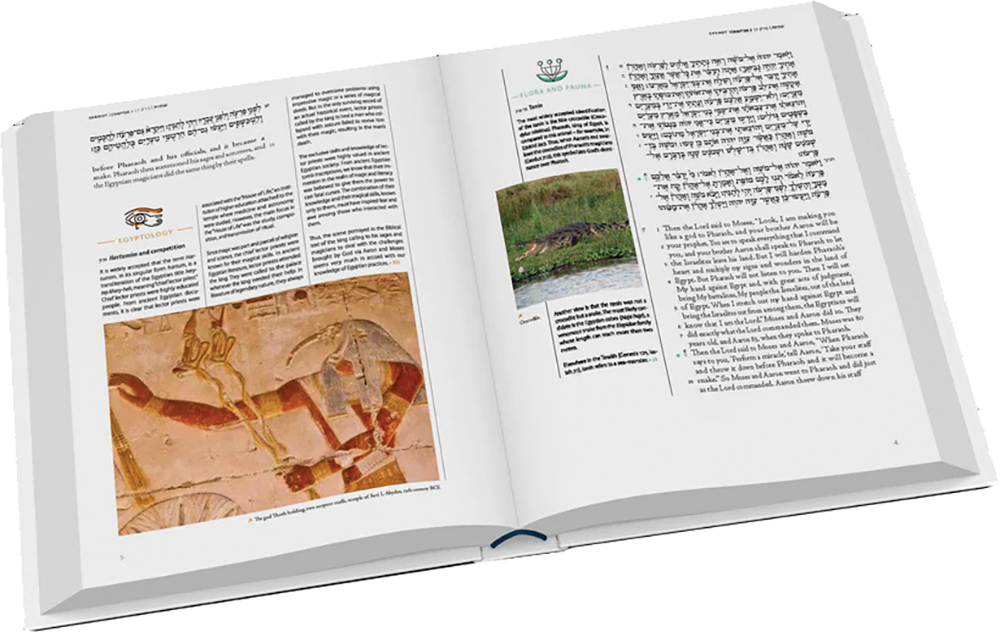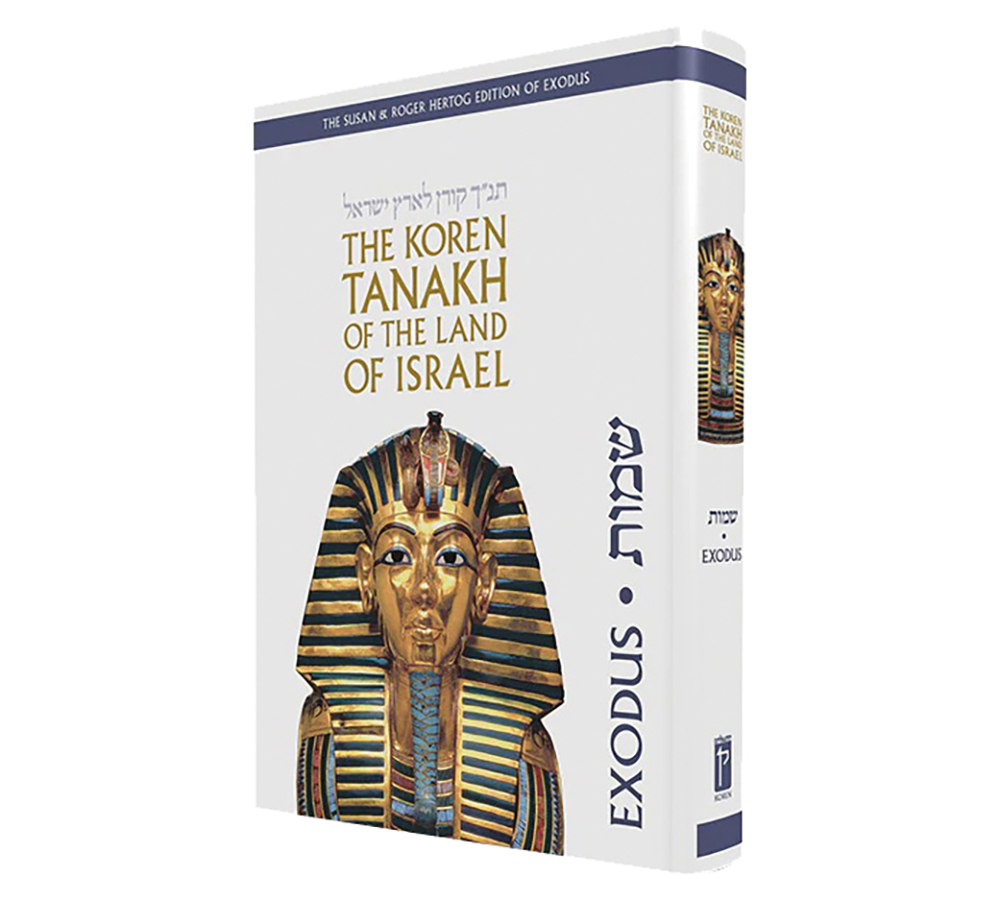
(Credit: Koren Publishers Jerusalem)
The events of the Tanach are a product of the time and place in which they took place. The host of civilizations the Israelites interacted with also influenced the nation’s development. To truly get acquainted with the Bible, one must understand the milieu of the ancient Near East, including the historic, literary, religious, social, political and geographic contexts that the Israelite nation emerged in millennia ago.
Koren Publishers Jerusalem offers an enriching study of Tanach with its extraordinary “Koren Tanach of the Land of Israel” series, by presenting the insights of modern academics on the ancient Near East and disciplines of the Bible. This fresh approach that draws from studies in archaeology, geography, Egyptology, Assyriology and other disciplines opens a window into the environment that helped shape the development of the Bible.
The development of the Koren Tanach of the Land of Israel began in 2016, when publisher Matthew Miller approached businessman-turned-tour guide David Arnovitz to oversee the production of this series, known as “the first Jewish edition of the Tanach which approaches the biblical text with a keen interest of the historical reality of its events.” A native of Atlanta who immigrated to Israel in 1999, Arnovitz was enjoying early retirement in Jerusalem after a lucrative career in technology and software development. With his background in business development and management and his newfound hobby of guiding tours, Arnovitz would make the perfect fit for this project.
Traditional sources typically focus inward on Jewish thought and texts. This series draws upon the culture of the time and its influence on the Israelite nation. It is peshat-based, relying solely on the biblical text, and includes an English translation by Rabbi Lord Jonathan Sacks, zt”l. The pages are lined with impressive visuals of artifacts, archaeological excavations, plants, inscriptions and maps, along with articles on botany, language, geography and more from Israeli and international scholars.
How can Egyptology help understand the verse in Exodus 3:18, when God instructs Moshe to approach Pharaoh requesting that he sends off the nation on a three-day journey? The accompanying article illustrates the work structure in ancient Egypt, and concludes with the following statement: “The ancient Egyptian work week was ten days long. According to the Deir el-Medina records, the last two days of each week, and often the first day of the following week, were free. In this context, the Israelites’ request to go and worship their God for three days seems in perfect order with an Egyptian norm.” The three-day break for worship can be understood with a new layer of knowledge in the context of the cultural norms of that time.
Understanding the laws of the Ancient Near East is also informative in understanding halacha. An article on Exodus 23:4, which introduces the commandment to return the lost domestic animal of an enemy, explains that if the animal of an enemy must be returned, then it would seem that the lost animal of anyone else must be returned. The article goes on to introduce the practices of Eshnunna. According to the laws of this ancient Sumerian city, an official who seized a stray ox or donkey was obliged to return it to its owner. Otherwise, this would be considered a crime of theft. Similarly, the Hittite laws require that a stray domestic animal be returned to its owner. Though this law is common to other civilizations, the command to return an enemy’s stray animal is only found in the Bible.

(Credit: Koren Publishers Jerusalem)
Compared to the traditions of Jewish sages, modern academic scholarship is a new discipline. This means that there is sometimes tension between traditional commentary and academic research. In the introduction to the series, its religious approach is articulated. Among the points, the series “assumes the Divine authorship of the Torah, rejecting theories of multiple authorship which disregard its fundamental unity.” The series “does not address questions of biblical chronology,” nor does it “justify, explain, deny, or rationalize the presence of miracles in the Tanach.” Furthermore, certain idiomatic elements of biblical language are not explained literally.
Released volumes include Exodus, Numbers, Leviticus and Samuel. A volume on Genesis is being printed, and Deuteronomy is currently underway.
Understanding this milieu the Bible is a product of is also essential to understanding the contributions the Israelite nation brought to the rest of the world. In his preface, Miller notes the contrast in certain practices between the Israelites and neighboring nations. For example, while neighboring nations treated slaves as merchandise, the Israelites lived by a set of laws dictated by the Bible that afforded the slaves rights. “One also cannot begin to comprehend the radical ethical revolution of the Torah without knowledge of the reality into which it entered,” he writes.
This series has been enjoyed by a broad audience across the Jewish spectrum. Arnovitz hopes that it will reinvigorate Jewish literacy among those that don’t have a strong background in religious texts and a study of Tanach in Orthodox circles that focus on Talmudic literacy. “We are trying to get people to be interested in the Tanach again because a lot of the Orthodox world has been very Gemara focused and don’t really understand that now that we’re back in the land of Israel, you should know what went on here.”
Alisa Bodner is a Fair Lawn native who immigrated to Israel over a decade ago. She is a nonprofit management professional who enjoys writing in her free time.

of the Land of Israel”
(Credit: Koren Publishers Jerusalem)










